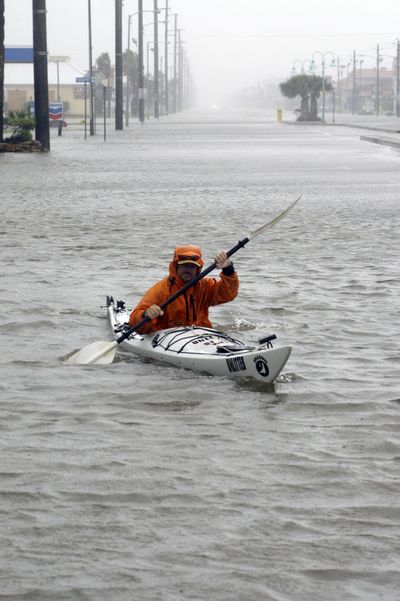Gulf residents flee heavy rain, floods, tornados

SAN FERNANDO, Mexico – Hurricane Alex made landfall on Mexico’s Gulf coast as a powerful Category 2 storm Wednesday, spawning tornadoes in nearby Texas, forcing evacuations in both countries and whipping up high waves that frustrated oil-spill cleanup efforts and pushed crude onto beaches.
Alex hit a relatively unpopulated stretch of coast in Mexico’s northern Tamaulipas state about 110 miles south of Brownsville, Texas, and was pushing inland at 10 mph , the U.S. National Hurricane Center said.
Its heavy rains and 110 mph winds lashed Mexican fishing villages, whose residents fled inland to the town of San Fernando on buses and in the back of pickup trucks. Hundreds of people filled a storm shelter in an auditorium in San Fernando.
Engineer Abel Ramirez of San Fernando’s Civil Protection and Fire Department said seven fishing villages, with a combined population of about 5,000, were being evacuated.
The civil defense office in Matamoros, across the border from Brownsville, said Alex’s rains had already flooded around 30 neighborhoods there and officials were using small boats to rescue some residents.
Alex spawned two tornadoes around Brownsville, including one that flipped over a trailer. Officials closed the causeway to South Padre Island, a popular vacation getaway off the Texas coast, and 9-foot waves were reported on the island’s beach.
But officials in Texas said the U.S. state had been spared a direct hit. No injuries or severe damage were immediately reported.
The National Weather Service downgraded its storm warning for the Texas coast from hurricane to tropical storm strength.
More than 1,000 people in low-lying Hidalgo and Cameron counties fled to storm shelters. More than 1,000 homes were without power late Wednesday, with the biggest outage caused not by the storm but by a car that ran into a utility pole.
The main threat as the hurricane begins to fall apart over land will be tornadoes, which could last another day or two, hurricane center meteorologist Chris Landsea said.
The other big threat is rain, Landsea said. Parts of Mexico and Texas are expected to get 6 to 12 inches of rain, which could cause flash flooding farther west.
The storm was far from the Gulf oil spill, but cleanup vessels were sidelined by the hurricane’s ripple effects. Six-foot waves churned up by the hurricane splattered beaches in Louisiana, Alabama and Florida with oil and tar balls.
It was the first June hurricane in the Atlantic since 1995, according to the hurricane center.